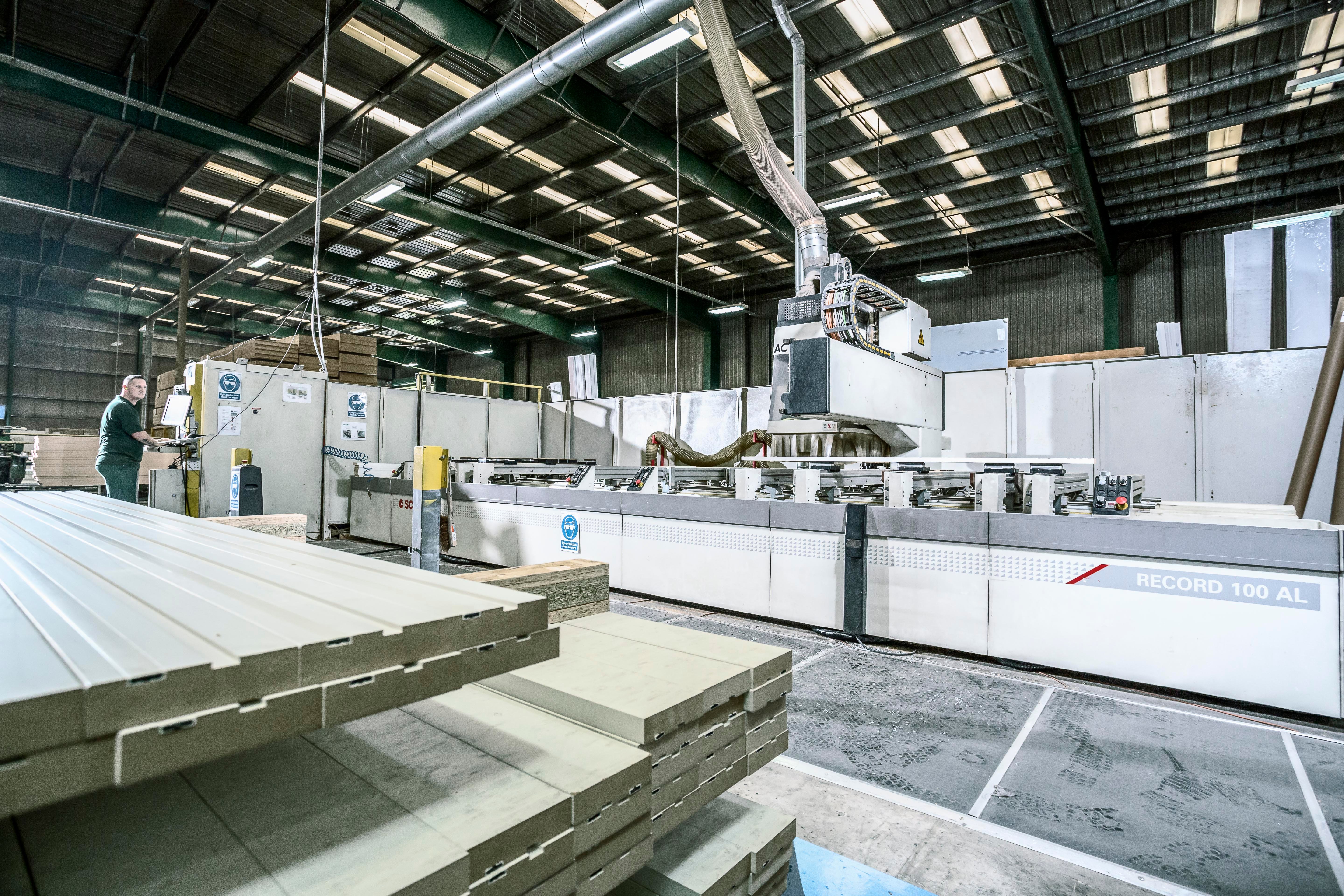If you are soon to be investing in some skirting board, architrave, or perhaps thinking of DIY-ing your own internal wall panelling, you may wonder if it’s worth choosing MDF to realise your vision. In the past, MDF sometimes hasn’t had the best reputation but more and more people are using it in their homes because of the numerous benefits it offers for a wide array of applications. We’ve put together 5 common misconceptions about MDF and explained the truth behind each to arm you with all the knowledge you’ll need when choosing a material for your next project.

Myth 1: MDF contains high levels of formaldehyde and can therefore be classified as carcinogenic.
If you ever mention MDF to anyone, it most certainly can be met with a raised eyebrow and mention of toxic fumes. Let’s dig a little deeper for this one. Formaldehyde is present in the resin that is used to glue MDF particles together, so many people believe that MDF can therefore cause cancer. However, MDF boards that are manufactured in Europe for construction legally must meet the appropriate European standards to ensure they are completely safe for use.
There are two European formaldehyde classes (E1 and E2). The boards that meet these standards release less than 0.1 parts per million (formaldehyde class E1) and between 0.1 and 0.3 parts per million (formaldehyde class E2). To put this into perspective, there is actually more formaldehyde in a tomato!
Myth 2: MDF is a poor quality material.
Cheap, generic flat-pack furniture, nothing new and innovative to see here, right? Wrong! MDF is actually used frequently and effectively for many high-end, bespoke applications like mouldings, interior panelling and kitchen cabinets. A lot of joiners out there actually prefer to use MDF instead of timber, as they find it is versatile, durable and provides a great quality finish with little preparation.
Myth 3: MDF is bad for the environment
Setting aside the fact that it is made from timber offcuts and wastage and is therefore a recycled product itself, MDF can actually be better for the environment than timber as there is little to no wastage with it. With the likes of timber, you will frequently find defects that end up being cut and binned. MDF on the other hand, doesn’t have any knots nor does it warp or twist, meaning you use exactly what you’ve bought. Similarly, at the early stages of production, any MDF wastage can be recycled to create heat or electricity, just as we do in the SAM factory.

Myth 4: MDF is super absorbent and swells when in contact with moisture
We think it’s important to know that not all MDF products installed in the home will absorb moisture and swell if they have been treated properly. The MDF that SAM uses, for example, is moisture resistant meaning it is ideal to be used for skirting and architrave, and suitable for high humidity environments including bathrooms and kitchens when primed and painted. Using moisture resistant MDF means you can enjoy your interior mouldings without the risk of warping and swelling.
Myth 5: You can’t cut MDF lengths at home as they will produce fine dust
It’s true that MDF will produce fine dust when being cut for installation (plastering and sanding also produce dust), but this doesn’t mean you can’t buy lengths from your local merchant and cut and install at home. It is best practice to cut MDF in a well-ventilated area or outside the home using the appropriate protective equipment. If you are using a chop saw to cut MDF, you should have a mechanical extraction and a dust mask. Once you have taken these necessary precautions, then it is safe to cut and install the material at home.
Were you aware of any of these misconceptions? Have your views on MDF changed over time since using the material in your own home? MDF is used in a vast amount of building projects for its durability and consistent, high quality finish. If you are interested in seeing MDF in action, why not check out our blog post: 5 amazing creations using MDF.
For more information visit samonline.co.uk or call our sales team on 028 9442 8288.

